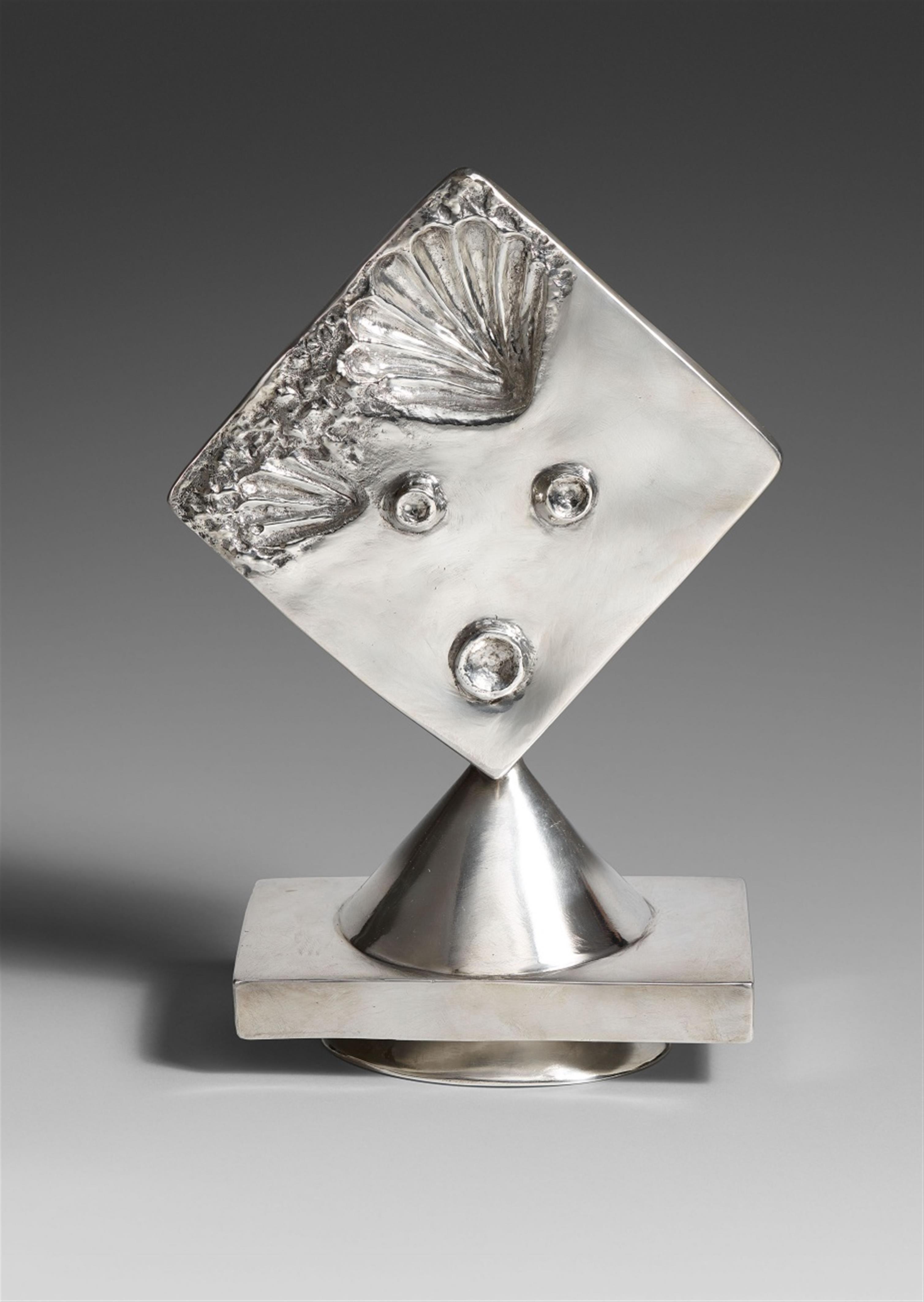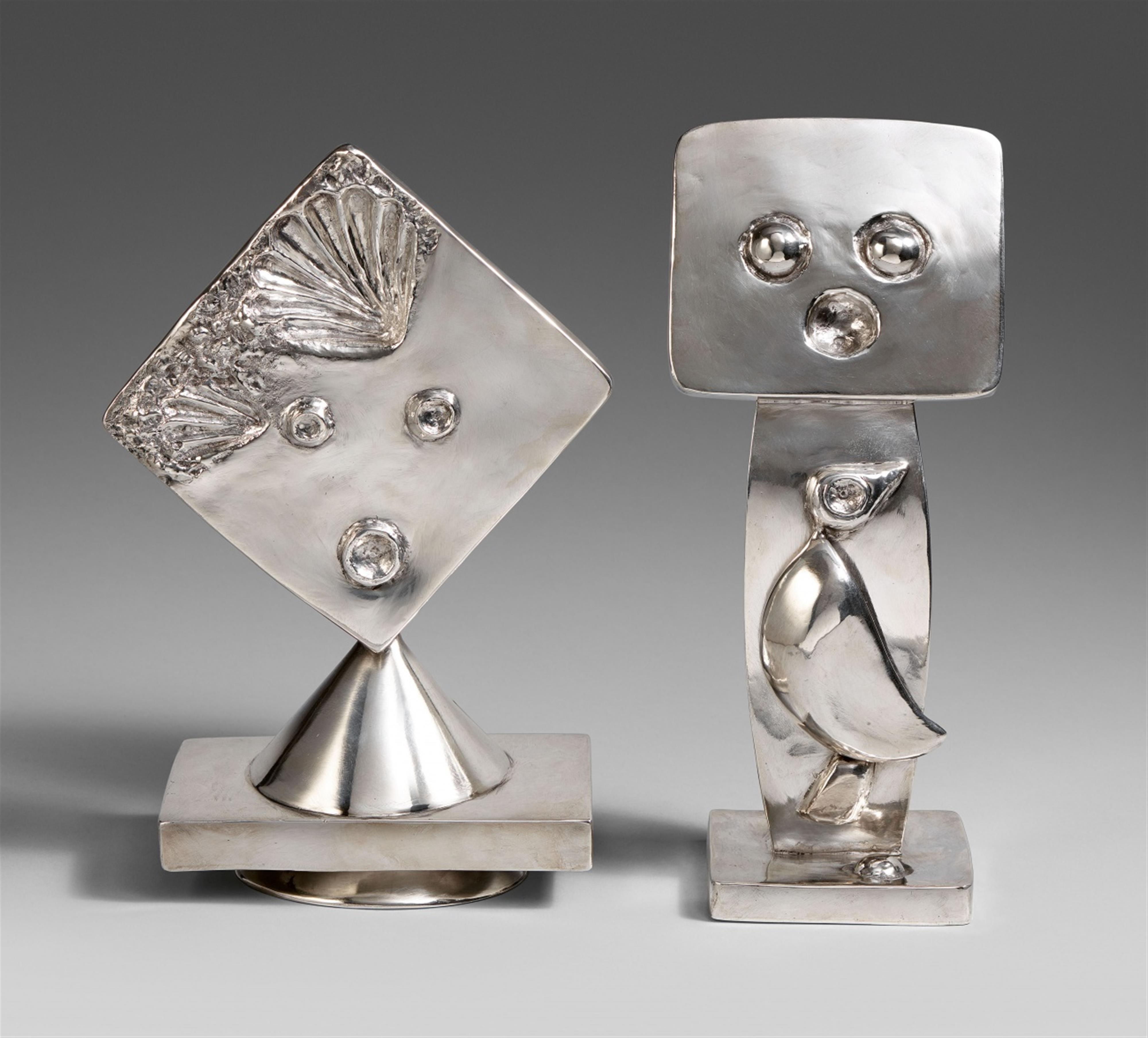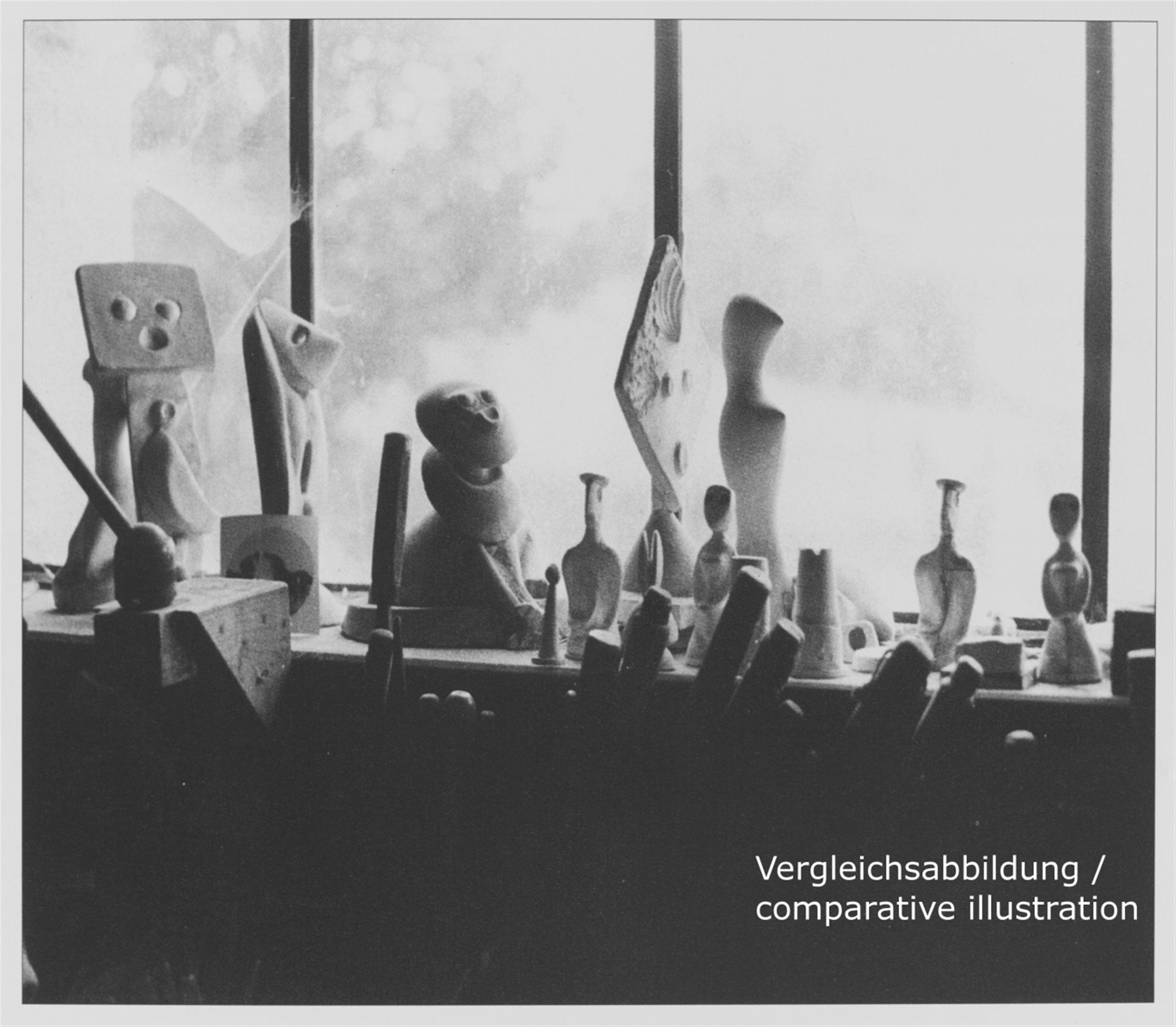Max Ernst
Femme (Madame)
1960/1961
Silver sculpture Height 28 cm Signed 'max ernst' on the underside. There it bears the François Hugo mark, the 950 "Minerva" silver hallmark, the reference number "852 1522" and the "EXEMPLAIRE D'ARTISTE" stamp. Exemplaire d'artiste aside from the edition of 6 numbered casts. Cast Goldsmith François Hugo, Aix-en-Provence.
Throughout his career the Dada artist and Surrealist Max Ernst worked with the collage principle, creating new content in his images through the combination of found material; he followed this principle not just in his works on paper but also in his statuary oeuvre. His sculptures emerged through assemblages of casts of everyday objects. During his late work in Huisme - the French community where Max Ernst lived with his wife, the artist Dorothea Tanning, from 1955 - he created the sculptures “Femme” and “Homme”, which in many ways unite Max Ernst's way of working and his “artistic storehouse”. The imprints of shells, for example, denote the hair and hairslide of “Madame” in an affectionately teasing manner and, just like the bird of “Monsieur”, they permit gendered connotations. As “Loplop”, the bird mirrors Ernst's artistic self, and the shells had already been a fixed feature since early in Ernst's oeuvre. “Femme” and “Homme” thus appear endearing, charming and a bit eccentric, and their immobility makes them seem akin to a totem.
Although they are rather large, both plaster forms were poured in silver by François Hugo in Aix-en-Provence. Max Ernst had been linked to this goldsmith since 1922 by a - sometimes close - friendship, and Dorothea Tanning also had her work executed by him in gold and silver. According to François Hugo's son Pierre, Max Ernst first had the idea of collaborating together in 1957, and in 1960, with the amusing plaster sculptures “Femme/Madame” and “Homme/Monsieur”, the artist created works directly planned for realisation in cast silver (Claire Siaud/François Hugo 2001, op. cit., p. 96; see comparative illustration). These can now be found here in the artist's exemplar casts for Max Ernst.
Catalogue Raisonné
Spies/Metken 3810,1
Provenance
Artist's estate, in family possession since, Rhineland
Literature
I.a. Gaëtan Picon, Atelier François Hugo, Paris 1967, n. pag., with full-page illus.; Claire Siaud/Pierre Hugo, Hommage à François Hugo/Tribute to François Hugo, Orfèvre/Goldsmith. Bijoux d'artistes/Artist's jewels, Aix-en-Provence 2001, pp. 95, 118, 119 with full-page colour illus.
Exhibitions
Paris 1961 (Le Point Cardinal), Max Ernst. Oeuvre sculpté 1913-1961, cat .no. 62 with illus.; Cologne/Zurich 1963 (Wallraf-Richartz-Museum/Kunsthaus Zürich), Max Ernst, cat. no. 217, presumably this example






